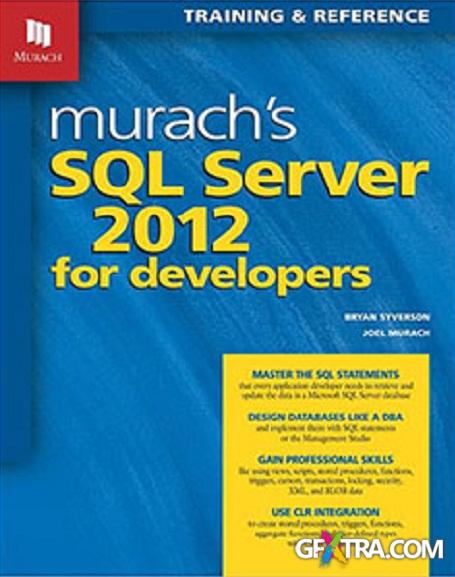
August 2012 | 814 pages | English | 1890774693 | PDF | 117 Mb
Every application developer who uses SQL Server 2012 should own this book. To start, it presents the essential SQL statements for retrieving and updating the data in a database. You have to master these to work effectively with database data in your applications. Then, it shows you how to design and create a database, because application developers often end up in the role of database designer and DBA. Next, it shows how to work with views, scripts, stored procedures, functions, triggers, cursors, transactions, locking, security, XML data, and BLOB data with FILESTREAM storage.
These features allow you to create database applications that are thoroughly professional. Finally, this book shows how to use the CLR integration feature and SQL Server Data Tools (SSDT), so you can use Visual Studio to code stored procedures, functions, triggers, aggregate functions, and user-defined types in C# or Visual Basic.
Who this book is for
I think it’s fair to say that most developers don’t know enough about SQL and the database management system they’re using. As one customer put it, “I know just enough about SQL Server to be a little bit dangerous!”
That’s why developers often code SQL statements that don’t perform as efficiently as they ought to. That’s why they aren’t able to code some of the queries that they need for their applications. That’s why they don’t take advantage of all the features that SQL Server has to offer.
And that’s why this book should be required reading for every application programmer who uses SQL Server. Beyond that, this is the right first book for anyone who wants to become a database administrator. Of course, if you want to become a DBA, you’ll need to continue your study of SQL Server’s advanced features after you finish this book…but you’ll be well-prepared to go on.
Table of Contents
Section 1: An introduction to SQL
Chapter 1. An introduction to relational databases and SQL
Chapter 2. How to use the Management Studio
Section 2: The essential SQL skills
Chapter 3. How to retrieve data from a single table
Chapter 4. How to retrieve data from two or more tables
Chapter 5. How to code summary queries
Chapter 6. How to code subqueries
Chapter 7. How to insert, update, and delete data
Chapter 8. How to work with data types
Chapter 9. How to use functions
Section 3: Database design and implementation
Chapter 10. How to design a database
Chapter 11. How to create and maintain databases, tables, and sequences with SQL statements
Chapter 12. How to use the Management Studio for database design
Section 4: Advanced SQL skills
Chapter 13. How to work with views
Chapter 14. How to code scripts
Chapter 15. How to code stored procedures, functions, and triggers
Chapter 16. How to work with cursors
Chapter 17. How to manage transactions and locking
Chapter 18. How to manage database security
Chapter 19. How to work with XML
Chapter 20. How to work with BLOBs
Section 5: CLR integration
Chapter 21. An introduction to CLR integration
Chapter 22. How to code CLR stored procedures, functions, and triggers
Chapter 23. How to code aggregate functions and user-defined types
Resources
Appendix A. How to install the required software for this book
Appendix B. How to install the files and databases used in this book
Appendix C. Coding and syntax conventions
TO MAC USERS: If RAR password doesn't work, use this archive program:
RAR Expander 0.8.5 Beta 4 and extract password protected files without error.
TO WIN USERS: If RAR password doesn't work, use this archive program:
Latest Winrar and extract password protected files without error.


